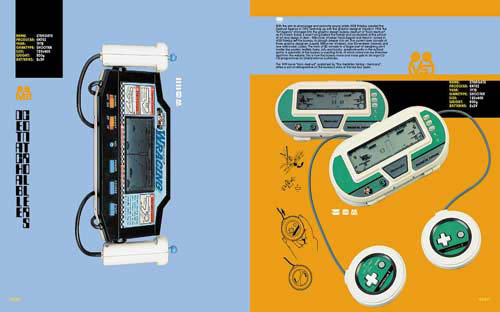PALO ALTO DREAMIN'
Page 2
Another artist doing the obvious with the computer is Jeremy Blake (also included in "010101"), whose animated, multiscreen presentations depict modernist grids morphing slowly in and out of stylized architectural spaces: a bachelor pad apartment, a Mediterranean villa, Japanese train-station lockers. Combining video game immediacy with art world elegance, his work has a hint of a design critique (depicting urban space as delerious, scene-changing spectacle) and a sleekness and richness of color that has caught the eye of collectors. While his animations are simple next to Hollywood's most run-of-the-mill magic--for example, the letters turning and pivoting in deep perspective space at the beginning of Paul Verhoeven's film Hollow Man--the software and plasma screen displays he uses are new to the art world, and that, combined with a certain polish, has buyers reaching for their checkbooks.
Of course in Hollywood movies there is a learning curve, or law of diminishing returns, with respect to new technology: an initial "wow" followed by rapid audience acclimatization, boredom, then demand for new tricks. Almost everyone knows the leaps of virtuality that occurred between Tron, 1982, and Shrek, 2001, transitions that required progressively more computing power but didn't necessarily yield better movies. To produce a film like Final Fantasy: The Spirits Within today requires nothing less than a "render farm," described by the Los Angeles Times as "a roomful of refrigerator-sized computer stacks."(*) All that hardware is a creative dead-end--the entertainment equivalent of Cold War defense spending--but if Blake's success raises the technological bar for other artists, that's where we're headed.
But to reiterate: it doesn't have to be that way. The story of computers in movies is one trajectory; a more interesting counter-trend is what happened in music in the mid-'80s, with sampling technology. One may recall that the first samplers were so expensive only rock stars could buy them: Frank Zappa owned New England Digital Corporation's Synclavier, and Stewart Copeland of the Police worked with its Australian counterpart, the Fairlight CMI. With the introduction of cheaper instruments such as the Ensoniq Mirage and Akai S1000, however, the means to copy, alter, layer, and timestretch (change speed without altering pitch) became available on a mass scale. Musicians working in basement studios suddenly had the freedom to play around with the technology, prompting the emergence of whole new genres based on quoting and mutating available sounds.
With the sampler, hiphop groups like Ultramagnetic MCs, Public Enemy, and a Tribe Called Quest took early '80s dj-style mixing to even more mind-bending levels, digitally splicing in spoken word clips, recontextualized hooks from old pop tunes, secondhand syncopation, and chunks of random noise, often tweaked into unfamiliar frequencies and timbres. By the '90s, sampler-driven hiphop had crossed the Atlantic and been transformed (by way of Belgian techno and other precursors) into "jungle," a jittery, drug-fueled sound that combined the dub and ragga influences of multiracial, inner-city London with floor shattering basslines and increasingly sped-up breakbeats. All of this is original, digital sound art, emerging unpredictably from street-level and rising to the highest peaks of complexity and nuance. (In "BitStreams," all the sound art was ambient, sending the somewhat snooty message that "rhythmic equals low.")

In the visual realm, hiphop and jungle found their counterparts in rave- and club-related graphics: CD covers, 12-inch record sleeves, and concert flyers produced by legions of anonymous (or pseudonymous) mouse-clickers, as well as higher-profile collectives like Designers Republic and Switzerland's Büro Destruct. These artists pioneered a look and feel to complement the music, merging Berlin Dada agitprop, Japanese "pop" lettering, and Atari-style bitscapes in a perplexing barrage of bold color and gorgeous metallic ink. Instead of the sampler, it was the scanner and the screen shot that opened up the entire visible universe to quotation and recombination. Just as '80s synth-groups exhaustively listed instruments on record sleeves, the graphics firms proudly catalogued the hardware and software used to make their de-centered, hard-edged, "wild-style" designs: "Amiga 500, Amiga 1200, Apple IIc, Power Mac G3/300, Adobe Illustrator, Iomega ZIP-drives, UMAX S-12 Scanner, AGFA ePhoto 1280, Nintendo GameBoys..." (**)
Art and graphics are two different things, but sometimes the fields overlap, as
with Russian Constructivism, Pop art in the '60s, and graffiti-related art in the '80s. Right now abundant, inexpensive imaging technology and quantum advances in consumer printing equipment (e.g., the EPSON line) have inspired a frenzy of experimentation, with artists and designers alike exploring the expressive opportunities (and limitations) of this emerging medium. Artists involved with the club scene may actually have an edge at the moment, because they've been at it longer and have a support system. While the art world has been dithering about whether or not work will "last," technologically and archivally, and hedging its bets by showing paintings "based on" (but not made with) the computer, the underground has shown no such hesitancy--records must have covers!
Which brings us to Matt Chansky, Claire Corey, and Marsha Cottrell, three artists doing some of the most interesting pieces in two dimensions with the computer right now. Working instinctively (and for the most part, abstractly), they are tweaking settings, experimenting with printing and paper, figuring out what are "cheesy," engineer-inspired effects and what aren't. Like the underground's, their imagery is both dynamic and oblique, with "deconstruction" expressed as a habit of mind rather than a literal social comment: a tacit refusal to use the computer on its own, industry-defined terms. Information from the immediate, scannable universe is imported, dismantled, and reassembled; motifs are shuttled back and forth among programs; machine error is exploited for artistic effect.
* M. Hiltzik and A. Pham, "Synthetic Actors Guild," Los Angeles Times, May 8, 2001, page A-1.** BURO DESTRUCT (Berlin: Die Gestalten Verlag, 1999), p. 190. Pictured above: Lopetz (from Büro Destruct), thumbnail book pages from Electronic Plastic (Berlin: Die Gestalten Verlag, 2001)
To view subsequent pages, click buttons below.
Back to criticism / weblog.
|